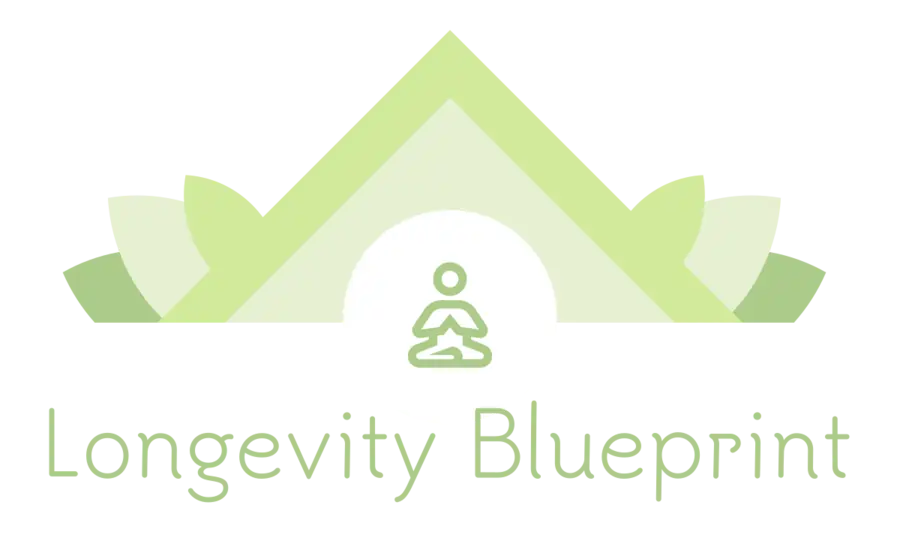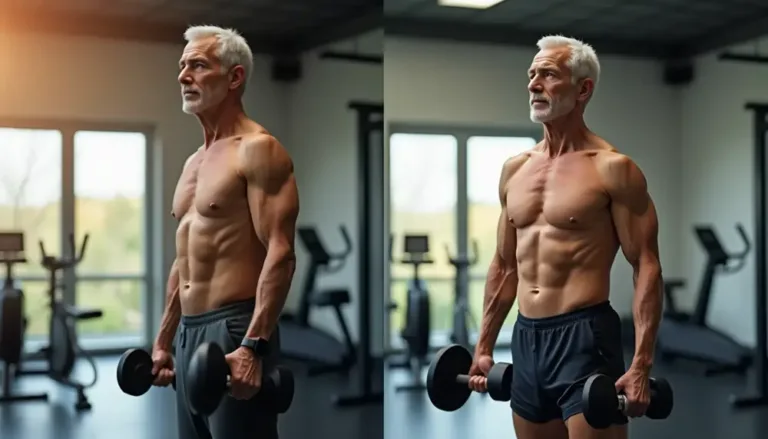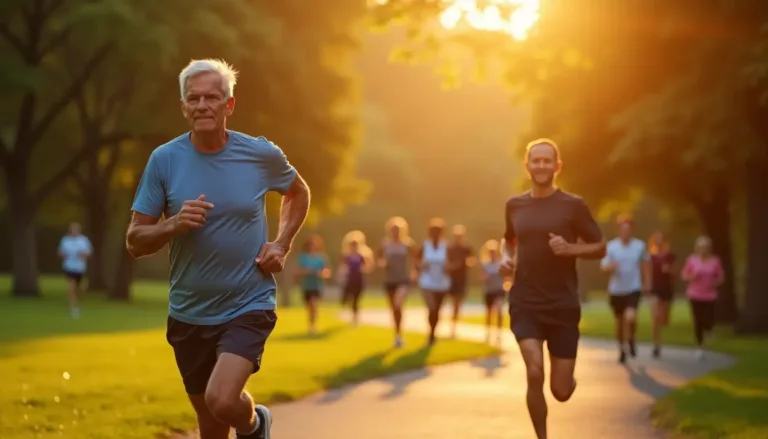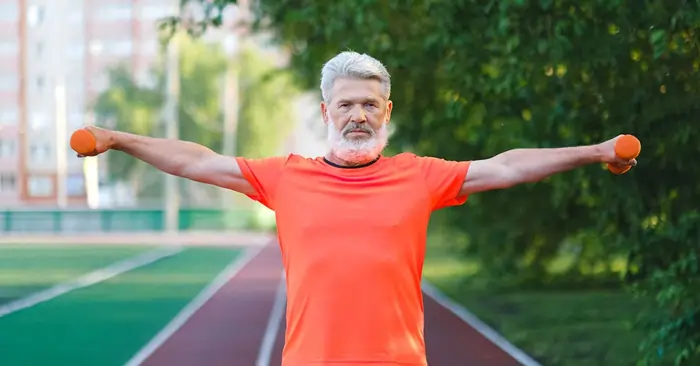How to Master Mobility Exercises for Seniors: A Simple Guide to Staying Active
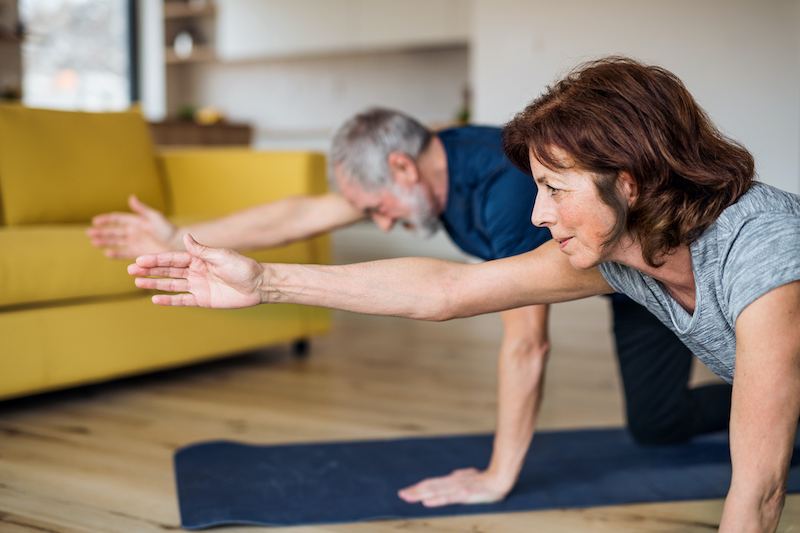
Back pain affects 80% of people at some point in their lives. This number grows as we age, and mobility becomes a bigger challenge. Age brings natural stiffness to our joints, making staying active harder than before. Older adults spend 9 to 13 hours sitting each day, which leads to several health risks.
The good news? Mobility exercises for older adults help seniors stay active and healthy. Research proves that structured physical activity programs cut major mobility disability risks by 18%. People who join these programs see a 30% drop in their daily activity struggles after five months.
Staying active gets tougher with age. That’s why we created this complete guide to help you boost your mobility. You might face joint stiffness or balance problems. Maybe you just want to stay active. We’ll guide you through safe and effective exercises that match your needs, including senior chair exercises and gentle exercises for seniors.
Ready to take your first step toward better mobility? Let’s help you stay independent longer and learn how to maintain mobility in old age.
Understanding Mobility Changes in Aging Bodies
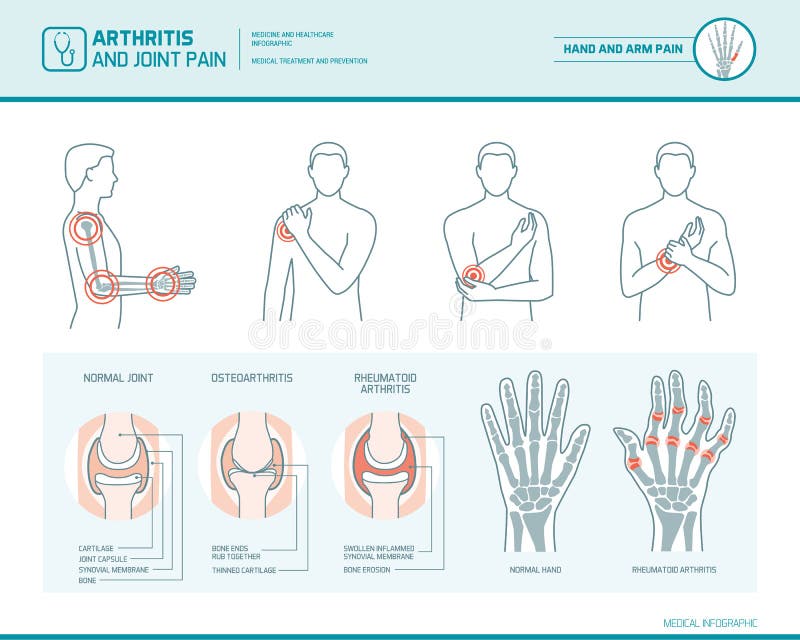
Image Source: Dreamstime.com
“Aging is not an option, not for anyone. It is how gracefully we handle the process and how lucky we are, as the process handles us.” — Cindy McDonal, American author and motivational speaker
Our bodies go through many important changes that affect how we move as we age. Research shows that two-thirds of Americans over age 65 need help with their daily activities [1]. A better grasp of these aging mobility challenges helps create better ways to stay independent longer.
Why Mobility Decreases with Age
The way we lose mobility isn’t just about “getting old” – it’s a complex process that affects multiple body systems. Our muscles naturally become smaller and weaker. After age 50, muscle mass drops by about 1% each year [2]. Bones become less dense and smaller [3]. The body replaces muscle tissue more slowly, often substituting it with fibrous tissue.
It’s worth mentioning that half of the age-related changes in muscles, bones, and joints happen because we don’t use them enough, not just because of aging [4]. This tells us that while mobility decline is common, we can prevent it through regular joint mobility exercises and strength training.
The Science Behind Joint Stiffness
Joints become stiff mainly because the protective cartilage between our bones wears away over time [5]. Scientists have found that when the extracellular matrix (the network around body tissues) becomes stiffer, it reduces a longevity-linked protein called Klotho [6].
Research shows that joints become less flexible throughout life. Shoulder and hip joints lose about 6 degrees of flexibility every decade after age 55 [2]. This decline speeds up after age 70 [7]. Interestingly, all but one of these joints change differently. The trunk and shoulders decline more while ankles, wrists, and hips change very little [8].
Common Mobility Challenges for Seniors
Seniors often face these mobility issues:
Unsteady walking
Trouble getting in/out of chairs
Balance problems that increase fall risk
Slower walking speed and less endurance
Difficulty moving around obstacles
These challenges create problems beyond physical limitations. Seniors who struggle to move often feel isolated, depressed, and less independent [9]. Falls can be especially dangerous – older bones break more easily and take longer to heal [1]. This is why fall prevention exercises are crucial for seniors.
To learn more about mobility and aging, check out these trusted resources:
National Institute on Aging (nia.nih.gov)
Mayo Clinic (mayoclinic.org)
Harvard Health (health.harvard.edu)
Assessing Your Current Mobility Level
You need to know your starting point before you begin mobility exercises. Learning about your current mobility level helps create tailored exercises that match your needs and lets you track progress as time goes by.
Simple At-Home Mobility Tests
You can safely check your mobility at home with several proven tests. The quickest way to measure this is the 30-second chair stand test. Here’s how to do it:
Sit in the middle of a sturdy, armless chair with feet flat on the floor.
Cross your arms over your chest.
Rise to a full standing position, then sit back down.
Repeat for 30 seconds, counting complete stands.
Age and gender affect the results differently. To name just one example, men aged 60-64 should complete at least 14 stands, while women in the same age group need to reach at least 12 [10]. These numbers get lower with age – men 90-94 should aim for at least 7 stands and women at least 4 [10].
The one-legged stand test gives you another useful measure. Stand on one foot without support – if you can’t hold this position for five seconds, you might face a higher risk of falls and injuries [10].
On top of that, the Timed Up and Go (TUG) test shows your overall mobility. Put a chair against a wall, mark a 10-foot distance, then time how long it takes to stand up, walk to the mark, return, and sit down [11]. Your healthcare provider can explain what these results mean.
When to Consult a Healthcare Professional
You should talk to a healthcare professional if you notice:
Problems standing from a seated position
You can’t walk one-quarter mile without stopping
Changes in how you climb stairs or walk short distances
Your feet spread more than 6 inches apart while walking [10]
You need more than three steps to turn around [10]
Your feet shuffle or drag when walking [10]
A professional check-up gives you a full picture that home tests can’t provide. Healthcare providers often use standard tests like the Elderly Mobility Scale (EMS) to check seven key mobility tasks [13]. These tests help identify specific limitations and create tailored strategies to improve mobility in elderly individuals.
Find more reliable information about mobility assessment at:
National Institute on Aging (nia.nih.gov)
American Physical Therapy Association (apta.org)
SilverSneakers (silversneakers.com)
Starting with Basic Elderly Mobility Exercises
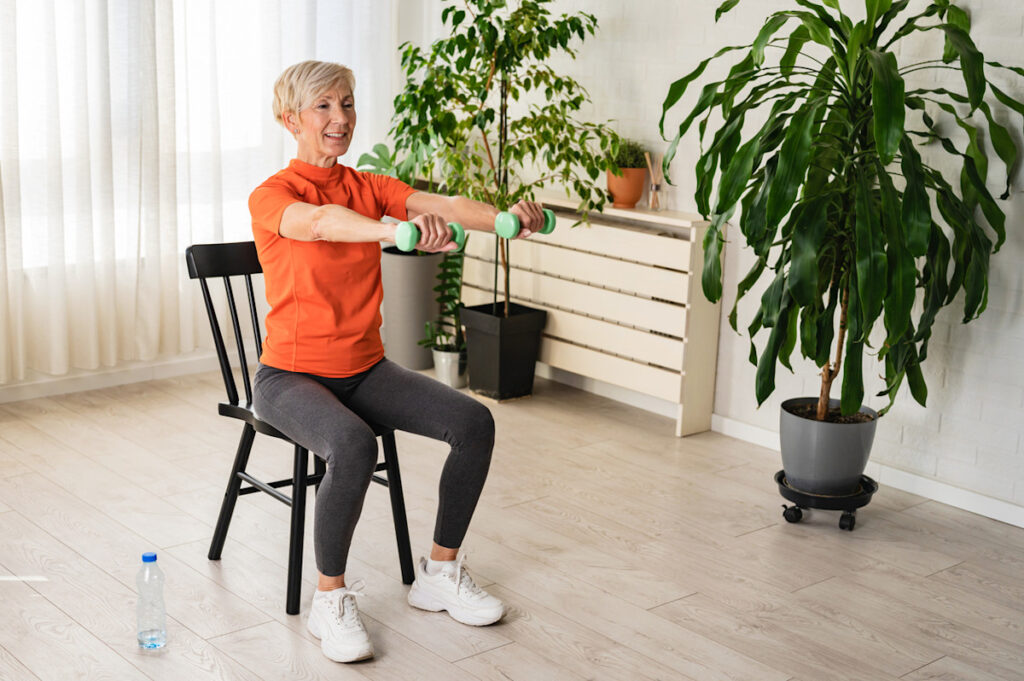
Image Source: Hinge Health
Understanding your mobility level lets you start practical exercises right away. Senior citizens who stay physically active maintain their independence, and research shows an 18% lower risk of major mobility problems [14]. Let’s look at some safe exercises that work for you, including chair exercises for elderly and sitting leg exercises.
Chair-Based Exercises for Limited Mobility
Chair exercises create a stable foundation for people aged 65+ or those who use assistive devices [15]. These seated exercises work well:
Seated Rows: Position yourself at the chair’s edge with arms extended forward and elbows bent. Your upper body gets stronger as you pull your elbows back and squeeze your shoulder blades together [16].
Knee Marches: Keep your back straight while holding the chair edges. Your hip mobility improves when you lift each knee toward your chest 20 times [16].
Wrist and Ankle Rolls: Your limbs get better circulation with 10 rotations in each direction [16].
For those with very limited mobility, wheelchair exercises for seniors can be adapted from these chair-based routines.
Standing Exercises for Balance and Stability
These balance exercises help build confidence and prevent falls:
One-Leg Stand: Stand close to a counter for support. You’ll build strength by lifting one foot off the floor for 10 seconds, then work up to 30 seconds [17].
Heel-to-Toe Walk: Your steps should follow a straight line with each heel touching the toe of your other foot [18].
Gentle Stretching Routines for Flexibility
Your joints need regular stretching to stay flexible and reduce stiffness. People lose about 6 degrees of flexibility every decade after turning 55 [19]. These range of motion exercises for seniors help:
Hamstring Stretch: Extend one leg forward while seated, keeping your heel on the floor. A gentle forward lean creates the right stretch [20].
Shoulder Stretch: Your shoulder mobility improves and pain eases when you gently pull one arm across your chest [19].
Creating a Safe Exercise Space
Your safety matters most. Remember these key points:
Gradual progression prevents injuries
Bad weather means exercising indoors
Exercise-specific shoes protect your feet
Keep water handy since older adults dehydrate more easily
Learn more about mobility exercises at:
National Institute on Aging (nia.nih.gov)
SilverSneakers (silversneakers.com)
Advancing Your Senior Mobility Practice
“Getting old is like climbing a mountain; you get a little out of breath, but the view is much better!” — Ingrid Bergman, Swedish actress and Hollywood icon
Your mobility practice can advance as you become more confident with simple exercises. The Centers for Disease Control recommends adults age 65 and over get at least 150 minutes per week of moderate intensity exercise [21]. A gradual advancement in your routine will give a steady improvement while you retain control of your safety.
Progressive Movement Patterns
You can gradually increase the challenge once you feel comfortable with simple movements by:
Extending duration: Add 5-10 seconds to each exercise hold each week.
Increasing repetitions: Work up to 10-15 repetitions per exercise.
Adding complexity: Try combining movements such as marching while seated with arm raises.
The Journal of Physical Therapy Science published studies that show seniors who keep doing progressive exercises like marches and chair rises needed less help with daily activities and showed better walking speeds [22]. These exercises also contribute to overall muscle strengthening and core strengthening.
Incorporating Household Items as Exercise Tools
You don’t need special equipment! Your everyday objects can be excellent exercise tools:
Soup cans (1-1½ pounds each) work perfectly as light weights for arm exercises [23].
A gallon of milk (approximately 8 pounds) can substitute for heavier weights [23].
You can create kettlebell alternatives by filling a purse with kitchen staples like bags of flour or rice [23].
A rolling pin works great as a foam roller for tight muscles [23].
Bath towels give versatile resistance. You can try towel stretches to improve ankle mobility or towel pulls to strengthen your upper body [24].
These items can be used for various upper body exercises and functional exercises that mimic daily activities.
Building a 10-Minute Daily Routine
Short daily practice brings powerful benefits. Research shows that even brief mobility sessions can help you stay pain-free and improve your physical function [6].
Your 10-minute routine could include:
Chair squats (1 minute)
Seated marches (1 minute)
Towel stretches for ankles (1 minute per side)
Standing balance practice (1 minute per side)
Gentle spine mobility movements (2 minutes)
Deep breathing and relaxation (2 minutes)
You can call this routine “brushing your teeth – but for your body” [4]. Your consistency matters more than how long or hard you exercise. This routine incorporates leg strengthening exercises for seniors while sitting and helps improve circulation.
You can find more guidance on advancing your mobility practice at:
National Institute on Aging (nia.nih.gov)
SilverSneakers (silversneakers.com)
American Council on Exercise (acefitness.org)
Conclusion
Staying mobile gets harder as we age, but science shows regular movement and well-laid-out exercise make the most important difference. Studies reveal that people who practice mobility exercises reduce their disability risks by 18% and improve their daily activities.
Seniors see amazing results through simple, consistent exercises. They often start with chair-based movements before moving to more complex routines. Success comes from steady, progressive steps that build strength and confidence over time, not intense workouts.
You should start your mobility experience today. Begin with simple exercises that match what you can do now. Your strength will grow gradually as you progress. Note that your body responds positively to just 10 minutes of daily movement.
Mobility equals independence. This holds true whether you use soup cans as weights or do chair exercises. Every small step leads to better health and improves your quality of life. By incorporating a mix of seated exercises, gentle exercises, and light exercises for seniors, you can significantly improve how to maintain mobility in old age.
Additional resources to support your mobility experience:
National Institute on Aging (nia.nih.gov/health/exercise-physical-activity)
SilverSneakers (silversneakers.com/blog/fitness-tips)
Mayo Clinic (mayoclinic.org/healthy-lifestyle/fitness)
FAQs
Q1. What are some effective ways for seniors to improve mobility?
Regular physical activity is key. Start with chair exercises for elderly like seated rows and knee marches, then progress to standing exercises for balance and stability. Gentle stretching routines can also help improve flexibility. Consistency is more important than intensity, so aim for at least 150 minutes of moderate exercise per week.
Q2. Which exercise is most beneficial for enhancing balance in older adults?
The single-leg stand is highly effective for improving balance in seniors. Start by holding onto a chair for support, then lift one foot off the ground and hold for a few seconds. Gradually increase the duration and reduce reliance on support as your balance improves. This exercise strengthens core muscles and legs, crucial for maintaining stability and fall prevention.
Q3. What is considered the best overall exercise for seniors?
Walking is often regarded as the best exercise for seniors due to its low-impact nature and accessibility. It offers numerous benefits, including improved cardiovascular health, increased bone density, and enhanced balance and coordination. Start with short walks and gradually increase duration and pace as your fitness improves. For those with limited mobility, seated exercises or chair exercises can be equally beneficial.
Q4. How can seniors incorporate household items into their exercise routine?
Everyday objects can serve as excellent exercise tools. Use soup cans as light weights for arm exercises, a gallon of milk for heavier lifts, or fill a purse with kitchen staples for a makeshift kettlebell. Bath towels can provide resistance for stretches, while a rolling pin can substitute as a foam roller for tight muscles. These items can be used for various upper body exercises and functional exercises that mimic daily activities.
Q5. What should a basic 10-minute daily mobility routine for seniors include?
A simple yet effective 10-minute routine could consist of chair squats (1 minute), seated marches (1 minute), towel stretches for ankles (1 minute per side), standing balance practice (1 minute per side), gentle spine mobility movements (2 minutes), and deep breathing and relaxation (2 minutes). This routine incorporates leg strengthening exercises for seniors while sitting and helps improve circulation. Remember to start slowly and gradually increase intensity as your strength and confidence grow.
References
[1] – https://www.lcmchealth.org/touro/blog/2021/december/6-tips-for-exercising-safely-as-an-older-adult/
[2] – https://www.texashealth.org/areyouawellbeing/Staying-Fit/When-It-Comes-to-Healthy-Aging-Strength-and-Flexibility-Go-Hand-in-Hand
[3] – https://www.mayoclinic.org/healthy-lifestyle/healthy-aging/in-depth/aging/art-20046070
[4] – https://www.builtlean.com/mobility-routine/?srsltid=AfmBOoqqxn9td-sCRfJ2pxLOWEJ74EuJl-8ZPcRvwi6A7gyfyICTDaGD
[5] – https://www.mayoclinic.org/diseases-conditions/osteoarthritis/symptoms-causes/syc-20351925
[6] – https://www.livestrong.com/article/13776964-10-minute-full-body-mobility-workout/
[7] – https://pmc.ncbi.nlm.nih.gov/articles/PMC3703899/
[8] – https://pmc.ncbi.nlm.nih.gov/articles/PMC3824991/
[9] – https://www.sondercare.com/learn/mobility-disability/what-common-mobility-issues-old-age/?srsltid=AfmBOoqYp_GDr0pIuYkfSL9ToltruqreMfm2hjHFciSlNtqbrVl0dvga
[10] – https://www.aarp.org/health/healthy-living/info-2020/assessing-mobility-balance.html
[11] – https://www.harmonyhomehealth.com/early-indicators-of-mobility-changes-in-older-adults/
[12] – https://www.health.harvard.edu/blog/two-questions-can-reveal-mobility-problems-in-seniors-201309186682
[13] – https://www.physio-pedia.com/Elderly_Mobility_Scale
[14] – https://www.nhs.uk/live-well/exercise/physical-activity-guidelines-older-adults/
[15] – https://health.clevelandclinic.org/chair-exercises-for-seniors
[16] – https://www.caregiversolutions.ca/health-and-wellness/eight-chair-exercises-for-older-adults-with-limited-mobility/
[17] – https://www.hopkinsmedicine.org/health/wellness-and-prevention/fall-prevention-exercises
[18] – https://www.nhs.uk/live-well/exercise/balance-exercises/
[19] – https://www.onemedical.com/blog/exercise-fitness/stretching-exercises-for-seniors/
[20] – https://www.silversneakers.com/blog/stretching-for-seniors-7-simple-moves-for-the-not-so-flexible-2/
[21] – https://www.healthline.com/health/exercise-fitness/balance-exercises-for-seniors
[22] – https://www.whereyoulivematters.org/resources/mobility-exercises-for-seniors/
[23] – https://www.aarp.org/health/healthy-living/improvising-workout-equipment/
[24] – https://www.silversneakers.com/blog/household-exercise-props/
